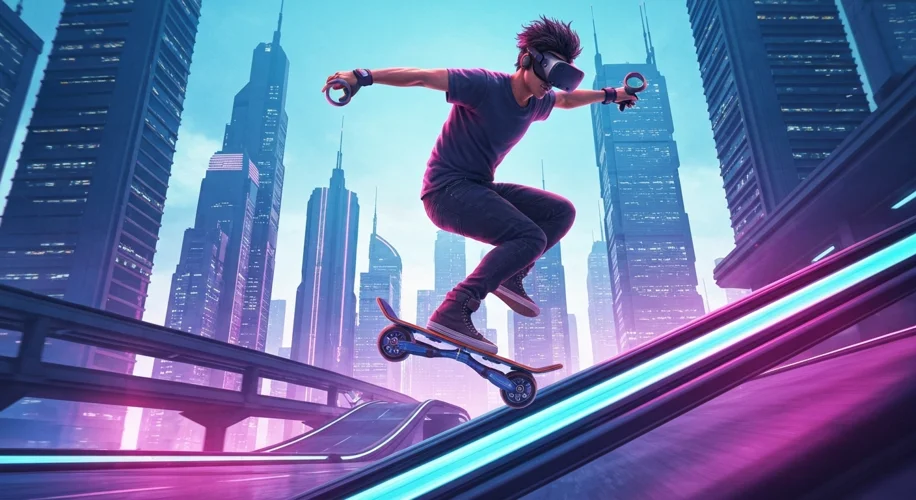Okay, so hear me out… VR gaming is getting seriously wild, and not just in terms of better graphics. We’re talking about entirely new ways to play that actually feel like they’re translating real-world actions into the virtual space.
I’ve been keeping an eye on some really cool stuff happening in VR development, and one project that caught my attention is a hoverboard game. Now, I know what you’re thinking – another simulator. But this isn’t just about tilting your controller to steer. This game is aiming to incorporate actual physical mechanics, like jumping and rail grinding, using your body’s natural movements.
Imagine this: you’re actually crouching to get lower on a rail, then popping up to jump over an obstacle, all while balancing on a virtual hoverboard. It sounds intense, right? This kind of development moves beyond just looking at a virtual world and actually starts to feel like you’re interacting with it physically. It’s about bringing more of your physical self into the game, which is a huge step for immersion.
Why does this matter? Because these innovative mechanics are what make VR truly special. When a game can make you feel like you’re physically performing an action – whether it’s the intense focus of a rail grind or the subtle shift of weight needed to maintain balance – it creates a much deeper connection to the virtual environment. It’s not just about the visuals; it’s about the embodied experience.
Think about traditional gaming. You press a button to jump. In VR, especially with developments like this, you might actually have to perform a physical jump, or at least a convincing motion that your body understands. This disconnect between physical action and virtual representation is being blurred, and that’s a really exciting direction for the future of gaming. It means more intuitive controls, more engaging gameplay, and a stronger sense of presence.
This kind of design forces developers to think about movement, balance, and physics in entirely new ways. It’s not just about rendering a cool environment; it’s about creating an environment that responds to your physical input in a believable way. This is where the real magic of VR lies – in tricking our brains into believing we’re somewhere else, doing something real.
So, while we’re all excited about higher resolutions and wider fields of view, don’t forget the mechanics. The future of VR gaming isn’t just about seeing more; it’s about doing more, in ways that feel more natural and more deeply engaging than ever before. I’m genuinely stoked to see where this trend takes us.

